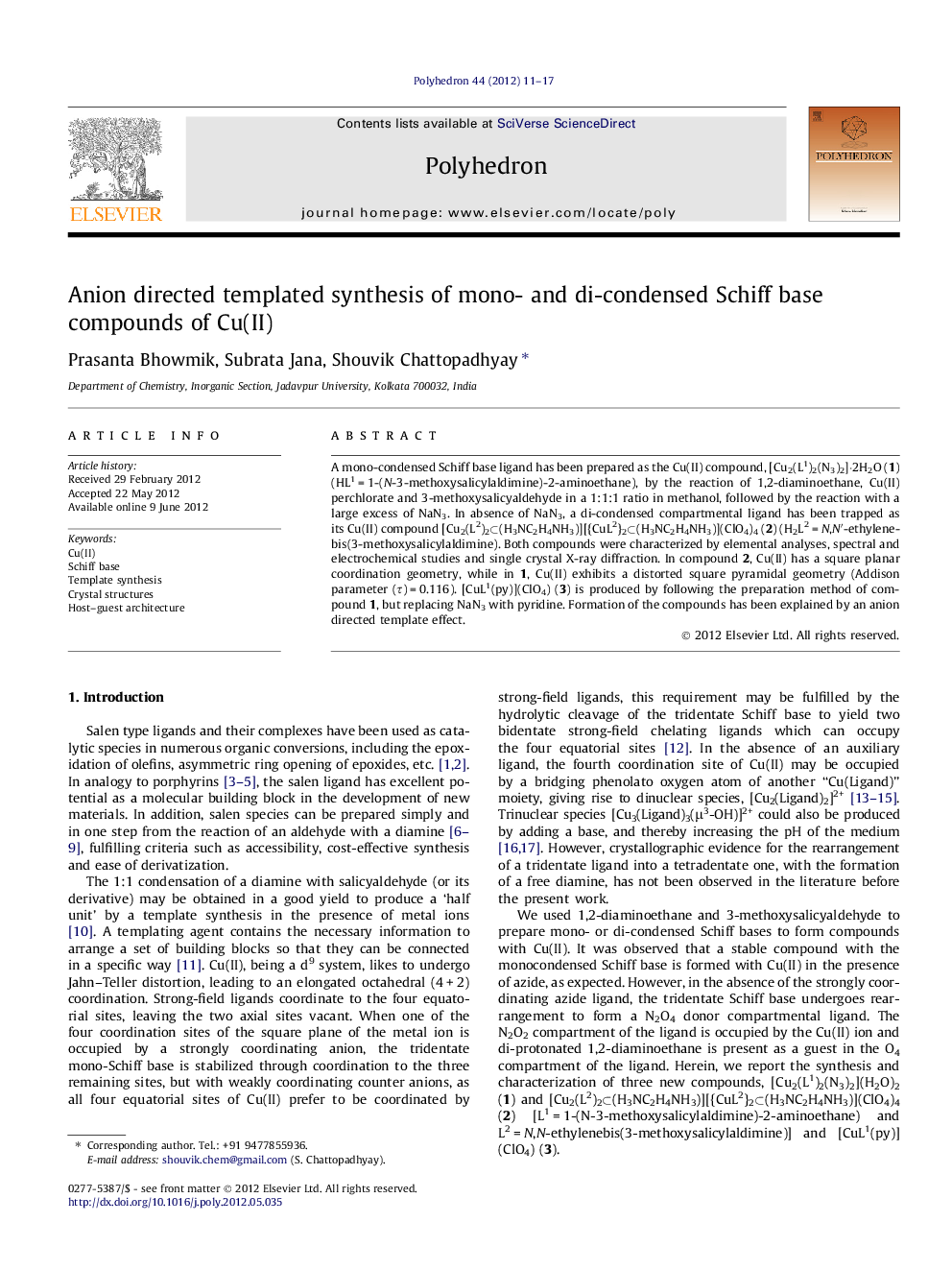| Article ID | Journal | Published Year | Pages | File Type |
|---|---|---|---|---|
| 1334719 | Polyhedron | 2012 | 7 Pages |
A mono-condensed Schiff base ligand has been prepared as the Cu(II) compound, [Cu2(L1)2(N3)2]·2H2O (1) (HL1 = 1-(N-3-methoxysalicylaldimine)-2-aminoethane), by the reaction of 1,2-diaminoethane, Cu(II) perchlorate and 3-methoxysalicyaldehyde in a 1:1:1 ratio in methanol, followed by the reaction with a large excess of NaN3. In absence of NaN3, a di-condensed compartmental ligand has been trapped as its Cu(II) compound [Cu2(L2)2⊂(H3NC2H4NH3)][{CuL2}2⊂(H3NC2H4NH3)](ClO4)4 (2) (H2L2 = N,N′-ethylenebis(3-methoxysalicylaldimine). Both compounds were characterized by elemental analyses, spectral and electrochemical studies and single crystal X-ray diffraction. In compound 2, Cu(II) has a square planar coordination geometry, while in 1, Cu(II) exhibits a distorted square pyramidal geometry (Addison parameter (τ) = 0.116). [CuL1(py)](ClO4) (3) is produced by following the preparation method of compound 1, but replacing NaN3 with pyridine. Formation of the compounds has been explained by an anion directed template effect.
Graphical abstractReaction of 1,2-diaminoethane, 3-methoxysalicyaldehyde and Cu(II) perchlorate in 1:1:1 ratio in methanol, followed by the addition with a large excess of NaN3, produces [Cu2(L1)2(N3)2]·2H2O (1). In the absence of NaN3, a tetradentate di-condensed compartmental ligand H2L2 (H2L2 = N,N′-ethylenebis(3-methoxysalicylaldimine) is trapped as its copper compound [Cu2(L2)2⊂(H3NC2H4NH3)][{CuL2}2⊂(H3NC2H4NH3)](ClO4)4 (2). Formation of the compounds has been explained by an anion directed cation templating effect.Figure optionsDownload full-size imageDownload as PowerPoint slideHighlights► Cu(II) compounds with mono-condensed tridentate or tetradentate di-Schiff bases have been synthesized. ► The molecular structures of the two have been elucidated on the basis of X-ray crystallography. ► Formation of the compounds has been explained by an anion directed cation templating effect.
